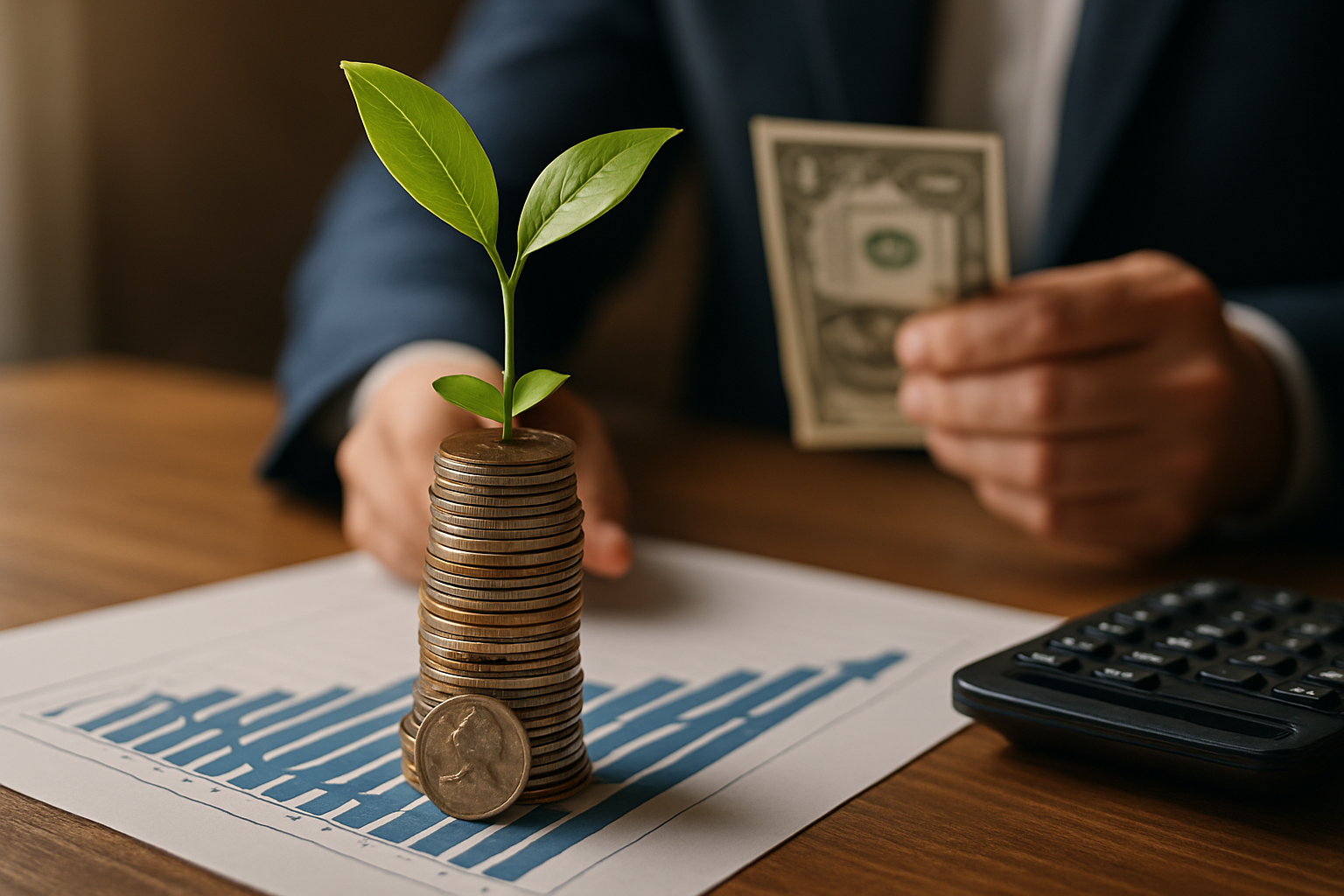Grow Savings Securely with Fixed Deposits
Fixed deposits (term deposits) let savers park a lump sum for a predefined period at a set interest rate, offering predictable, low-risk returns and capital protection. Ideal for conservative investors seeking steady income or principal safety, FDs let you choose payout frequency and tenure to match your cash-flow needs.

Grow Savings Securely with Fixed Deposits
Fixed deposits, often called term deposits, are a straightforward savings vehicle where you place a lump sum with a bank or financial institution for a fixed period in exchange for a guaranteed interest rate. Depending on the terms you select, interest can be paid out periodically (monthly, quarterly, annually) or compounded and disbursed at maturity. At the end of the tenure you receive your principal plus the earned interest, unless you opt to roll over the deposit into a new term.
Why investors choose fixed deposits
Fixed deposits appeal to people who prioritize capital preservation and predictable returns. Here are the primary reasons savers pick FDs:
-
Guaranteed income: FDs provide a set interest rate, so you know in advance the return your money will earn over the chosen term, removing market uncertainty.
-
High safety: Many countries insure bank term deposits up to a specified limit, making FDs among the safest options for parking funds.
-
Flexible tenures: Institutions typically offer a wide range of maturities—from a few months to several years—so you can match the term to planned expenses or saving goals.
-
Simple structure: The product is easy to understand for novice and experienced investors alike, with clear terms for rate, tenure, and payout frequency.
-
Protection from market swings: Because returns are fixed, FD holders are insulated from stock market volatility, which can be reassuring in turbulent economic times.
Potential downsides to be aware of
While fixed deposits offer stability, they have limitations that may affect long-term goals:
-
Modest returns: Compared with equities or actively managed mutual funds, FDs generally yield lower returns, limiting growth potential.
-
Inflation risk: If the FD interest rate is below inflation, real purchasing power can decline over time.
-
Reduced liquidity: Early withdrawal usually incurs penalties or a lower interest payout, so FDs aren’t ideal for emergency cash needs.
-
Taxable interest: Interest earned on deposits is often subject to income tax, which can erode net returns depending on your tax bracket.
How to pick the right fixed deposit
To select an FD that fits your situation, evaluate these factors:
-
Interest rate comparison: Shop around between banks and non-bank lenders to find competitive yields; even small rate differences matter on larger sums.
-
Term length: Pick a maturity aligned to when you’ll need the money—shorter terms for near-term goals, longer terms if you don’t require immediate access.
-
Payout preference: Decide whether you want periodic interest to supplement income or prefer compounding to maximize returns at maturity.
-
Institution credibility: Choose well-capitalized, reputable banks to reduce counterparty risk; check credit ratings and regulatory protections.
-
Special offers: Look for enhanced rates for senior citizens, large deposits, or promotional schemes—these can boost effective yield.
Other places to put your savings
If FDs aren’t the perfect fit, consider these alternatives and how they differ in risk and liquidity:
-
Savings accounts: Offer easy access and high liquidity but typically lower interest than term deposits.
-
Money market accounts: Often provide better rates than standard savings with moderate liquidity and minimum balance requirements.
-
Government bonds: Provide safety similar to FDs and sometimes slightly higher yields; maturity and tax treatment vary by country.
-
Corporate bonds: Potentially higher returns than government instruments, but carry credit risk depending on the issuer’s strength.
-
Mutual funds: Offer the potential for greater long-term growth via diversified market exposure, but returns fluctuate with market performance.
| Savings Option | Interest Rate | Liquidity | Risk Level | Minimum Investment |
|---|---|---|---|---|
| Fixed Deposit | Medium to High | Low | Very Low | Varies by bank |
| Savings Account | Low | Very High | Very Low | Often no minimum |
| Money Market Account | Medium | Medium | Low | Often higher than savings |
| Government Bonds | Medium | Low to Medium | Very Low | Varies by country |
| Corporate Bonds | Medium to High | Low to Medium | Low to Medium | Often higher than FDs |
Prices, rates, or cost estimates mentioned in this article are based on the latest available information but may change over time. Independent research is advised before making financial decisions.
Bringing it together
Fixed deposits remain a cornerstone for conservative savers because they combine clarity, security, and predictable returns. They’re especially useful for capital preservation, predictable income streams, and as a diversification tool within a broader portfolio. However, because FDs can lag behind inflation or higher-return assets over the long run, many investors use them alongside equities, bonds, or mutual funds to balanced risk and return.
Before committing funds, compare rates, read terms on early withdrawals, assess tax consequences, and confirm deposit insurance limits. That approach will help you decide whether a fixed deposit fits your financial objectives, liquidity needs, and tolerance for risk.






